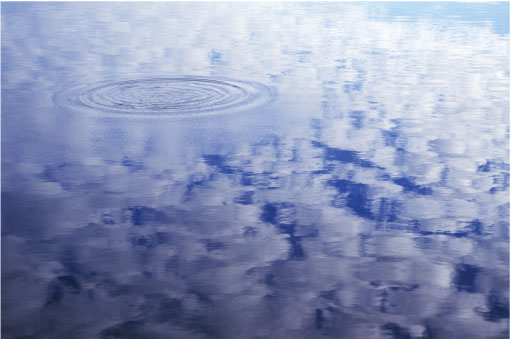1 How do you make a wave?
Waves on the surface of the ocean are caused by winds that displace the surface. The same applies in the atmosphere too. The displacement by a force such as the wind pushes the boundary, or interface, between two different density regions away from the state it would have at rest, that is from where the surface would be if it were not moved.
Another way to displace the boundary between fluids of two different densities is to simply throw a stone into a pond (Figure 1).
We can break down what is happening in Figure 1 into stages:
- First the stone hits the surface of the water and deflects it downwards.
- Then the stone breaks through the surface of the water and sinks, effectively leaving a ‘hole’ in the water.
- The surface of the water then reforms and rises back up to the level it was before the stone hit. This level is called the mean water level.
-
What does the water surface do once it reaches the mean water level?
-
It overshoots the mean water level and rises above it.
- Once the disturbed water surface has reached its maximum height, it starts to descend back towards the mean water level.
- Again, the disturbed water surface overshoots, this time to below the mean water level of the pond.
- Once the water surface has reached its maximum depth it starts to rise once more back towards the mean water level.
This cycle or oscillation happens quickly but each time the displacement above and below the mean water level decreases in distance, and eventually the surface comes to rest. This scenario will happen for any fluid disturbed in this way – however, the time it takes for the surface to come back to rest is different depending on its density.

